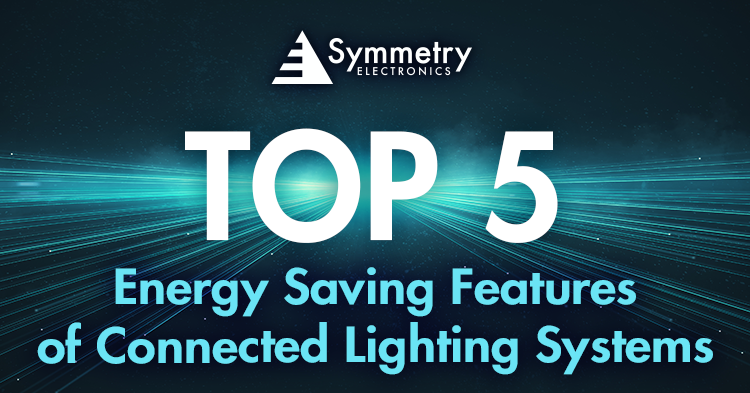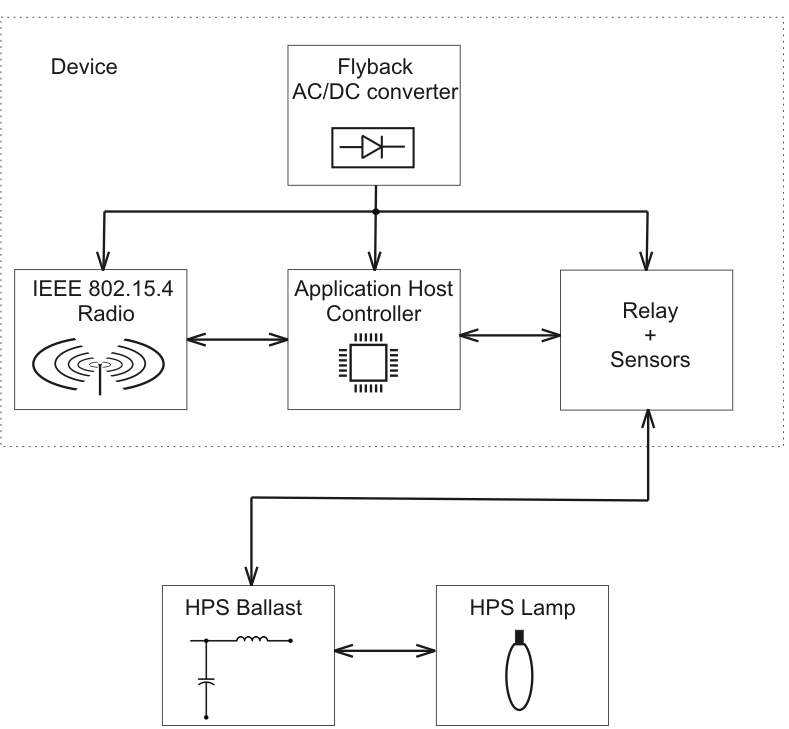- Home
- Symmetry Blog
- Top 5 Energy Saving Features of Connected Lighting Systems
Top 5 Energy Saving Features of Connected Lighting Systems
About Jari Haiston

In recent years, the advancement of technology has brought about significant improvements in various aspects of our lives. One area that has benefited greatly from these advancements is lighting systems. Connected lighting, also known as smart lighting, has revolutionized the way we illuminate our homes, businesses, and cities. Apart from their convenience and versatility, connected lighting systems also offer several energy-saving features that can have a positive impact on both the environment and our electricity bills.
What is Connected Lighting?
According to the Department of Energy, connected lighting systems refer to lighting systems with distributed intelligence sensors and modern network interfaces. Smart lights offer convenience, energy efficiency, and customization options that go beyond traditional lighting controls. They provide users with the ability to create personalized lighting experiences and manage their lights effortlessly through intuitive interfaces and automation features.

Connected lighting relies on several key technologies (Figure 1) for efficient operation:
- Wireless communication
- IoT sensors
- LED technology
- Home automation integration
- Machine learning and artificial intelligence (AI)
Do Smart Lights Save Money?
Research and Markets reports that the global smart lighting market is expected to reach an estimated $21.7 billion by 2027. One of the reasons behind smart lighting’s growing popularity and implementation can be attributed to the cost-saving benefits it provides. Smart lights can save money in several ways. Connected lighting systems are cost-effective in several ways.
- Energy Efficiency: Smart lights are designed with energy efficiency in mind. They use advanced technologies such as LED bulbs, which consume significantly less energy compared to traditional incandescent bulbs. By reducing energy consumption, smart lights can lead to substantial savings on your electricity bills.
- Automated Controls: Smart lights offer features like scheduling, motion sensors, and occupancy detection. These capabilities ensure that lights are only active when needed and automatically turn off when a room is unoccupied. By avoiding unnecessary energy usage, smart lights help lower electricity costs.
- Dimming and Brightness Control: Many smart lighting systems allow you to adjust the brightness levels of individual lights or groups of lights. This feature enables you to customize the lighting intensity according to your needs, reducing energy consumption and extending the lifespan of your bulbs.
- Remote Access and Monitoring: With smart lighting systems, you can control and monitor your lights remotely through smartphone apps or voice assistants. This functionality allows you to turn off lights accidentally left on, even when you're away from home. By preventing unnecessary usage, you can save money on electricity bills.
- Longevity and Maintenance: Smart lights, especially LED bulbs, have a longer lifespan compared to traditional bulbs. LED bulbs can last up to 25 times longer, which means fewer replacements and lower maintenance costs over time. Additionally, smart lighting systems often provide maintenance alerts, notifying you when a bulb needs replacement, further optimizing your expenses.
- Energy Usage Insights: Many smart lighting systems offer energy usage monitoring features. They provide detailed data on your lighting usage, helping you identify areas of inefficiency and make informed decisions about energy-saving strategies. By gaining insights into your energy consumption patterns, you can adjust your lighting settings and optimize energy usage to save money.
While the initial investment in smart lighting may be higher compared to traditional lighting options, the long-term cost savings make them a worthwhile investment. The energy-efficient features and smart controls of these systems contribute to reducing energy waste and lowering electricity bills, resulting in significant financial benefits over time.
5 Energy Saving Benefits Behind Connected Lighting
Beyond the cost-saving benefits, connected lighting systems offer several features and functionalities that contribute to energy savings. The top five energy-saving benefits behind connected lighting systems include:
- Motion Sensors: One of the key features of connected lighting systems is the ability to incorporate motion sensors. These sensors detect movement within a given space and automatically turn on the lights. When no motion is detected for a specified period, the lights are automatically switched off. This feature is particularly useful in areas such as hallways, garages, and restrooms, where people often forget to turn off the lights when they leave. By eliminating the need for manual control, motion sensors ensure that lights are only on when necessary, resulting in significant energy savings.
- Daylight Harvesting: Connected lighting systems can also take advantage of natural light by implementing daylight harvesting technology. This feature involves sensors that measure the amount of natural light available in a room and adjust the artificial lighting accordingly. When the sensors detect sufficient daylight, the connected lights automatically dim or switch off, reducing the reliance on artificial lighting. By optimizing the use of natural light, daylight harvesting helps save energy and creates a more comfortable and balanced lighting environment.
- Scheduled Lighting: Another energy-saving feature of connected lighting systems is the ability to schedule lighting operations. Users can program their lighting systems to turn on and off at specific times of the day or night. This feature is beneficial for outdoor lighting, where it can automatically adjust to seasonal changes in sunset and sunrise times. By following a predefined schedule, connected lighting systems eliminate the need for lights to be left on unnecessarily, resulting in energy savings and enhanced security.
- Occupancy Awareness: Connected lighting systems can be equipped with occupancy awareness capabilities. These systems utilize various sensors, such as infrared sensors or cameras, to detect the presence of occupants in a room or area. Based on this information, the lights adjust their brightness levels or turn off completely when the space is unoccupied. This feature is particularly useful in office buildings, conference rooms, or classrooms, where occupancy patterns can be unpredictable. By responding to real-time occupancy data, connected lighting systems reduce energy consumption by ensuring lights are only active when needed.
- Energy Monitoring and Analytics: Many connected lighting systems come with built-in energy monitoring and analytics tools. These tools provide detailed insights into energy usage patterns, allowing users to identify areas of inefficiency and make informed decisions about energy-saving strategies. By monitoring energy consumption in real-time and analyzing historical data, users can optimize their lighting settings, identify faulty equipment, or even detect potential energy-saving opportunities. The ability to measure and analyze energy usage empowers individuals and businesses to take proactive steps toward reducing their energy footprint.
Connected Lighting System Use Cases
Smart light solutions are already being implemented in a wide variety of use cases. River Lights in the Rock in Little Rock, Arkansas (Figure 2) is a project that integrates 2,000 smart LED lighting fixtures over three of their popular bridges. While an aesthetically pleasing design choice, the connected lighting project also earned the city with an award from IDC’s Smart Cities of North America.

Beyond aesthetics, smart lighting has a range of use cases and applications like:
- Energy efficiency
- Remote control
- Security and safety
- Motion detection
- Circadian lighting
- Smart home integration
- Smart city integration
- Smart building integration
- Voice control
- Geolocation-based automation
- Integration with IoT ecosystems
In conclusion, connected lighting systems offer numerous energy-saving features that contribute to both sustainability and cost reduction. Motion sensors, daylight harvesting, scheduled lighting, occupancy awareness, and energy monitoring are just a few examples of how these systems can optimize energy usage. By implementing these features, individuals and businesses can make significant strides toward a more energy-efficient future while enjoying the benefits of smart and connected lighting systems.
If you’re interested in developing a connected lighting solution, our knowledgeable team of Application Engineers are experts in IoT, IIoT, and connected technology and are uniquely positioned to help guide your to you ideal design solutions. Consultation is free and available throughout your design cycle. Contact Symmetry Electronics today!
